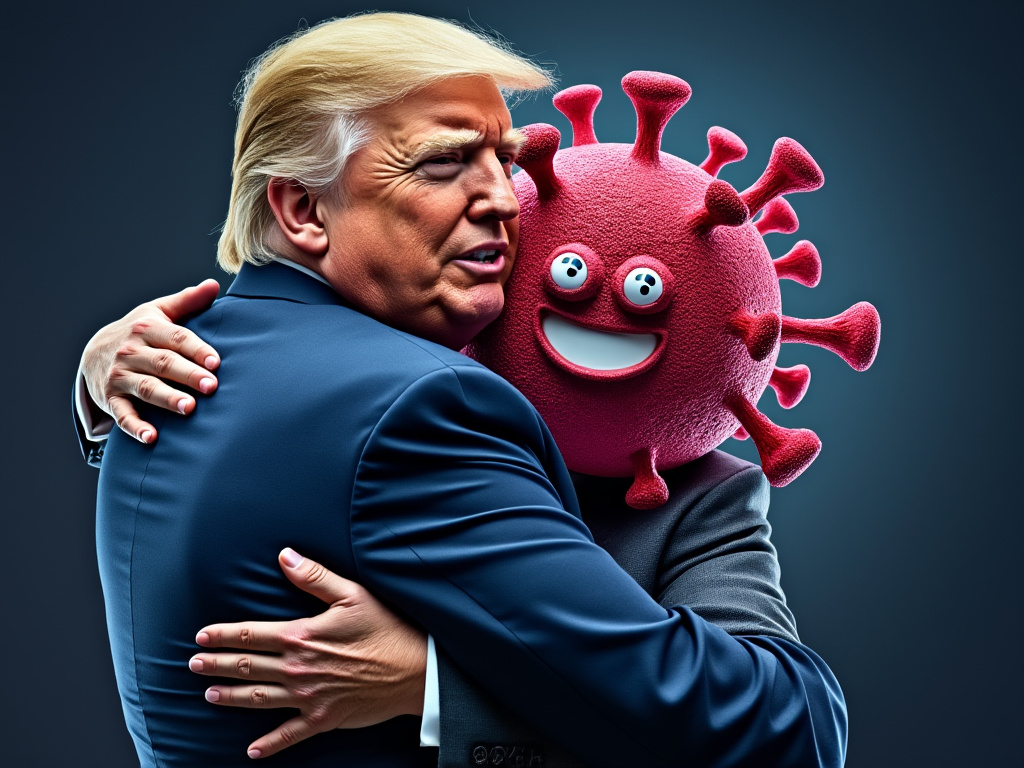The Trump administration's response to the COVID-19 pandemic has been widely criticized as inadequate and ineffective, contributing to the loss of hundreds of thousands of American lives. As we look back on this tumultuous period in U.S. history, it's crucial to examine the factors that led to such a catastrophic failure in public health management.
From the outset, President Trump's approach to the pandemic was characterized by a persistent downplaying of the threat. Despite receiving ample warnings about the potential severity of the outbreak, Trump repeatedly dismissed the danger, claiming that the virus would "disappear" like a "miracle"1. This attitude set the tone for the administration's overall response, creating an environment where delivering unfavorable news was discouraged and crucial decision-making processes were obstructed.
One of the most glaring failures of the Trump administration was its inability to secure sufficient testing supplies early in the pandemic. This oversight allowed the virus to spread undetected across various states, hampering efforts to contain the outbreak1. The lack of adequate testing was compounded by the administration's attempts to control the flow of information from public health agencies. For instance, the White House blocked the Centers for Disease Control and Prevention (CDC) from holding press briefings and altered testing guidelines, hindering public awareness and effective response strategies3.
The administration's focus on optics over public health was particularly evident in its handling of the cruise ship crisis off California's coast. While health officials and Vice President Mike Pence devised a plan to swiftly evacuate passengers to prevent a situation similar to the Diamond Princess outbreak, Trump preferred to leave infected passengers onboard to artificially keep U.S. case numbers low1. This decision exemplifies the administration's prioritization of political considerations over public health needs.
Trump's inconsistent messaging on preventive measures further undermined public health efforts. He sent mixed signals about the importance of masks, social distancing, and other preventive measures, often contradicting the advice of his own health experts2. This inconsistency created confusion among the public and hindered efforts to control the spread of the virus.
The president's tendency to promote unproven or potentially dangerous treatments also diverted attention from evidence-based approaches. His advocacy for hydroxychloroquine and suggestion of injecting disinfectants not only undermined scientific credibility but also potentially put lives at risk2.
Beyond the immediate response to the pandemic, Trump's actions had far-reaching consequences for global health cooperation. His decision to withdraw the United States from the World Health Organization in the midst of a global health crisis reduced international coordination efforts at a critical time2. This move, coupled with his earlier dismantling of pandemic preparedness teams within the National Security Council, left the country ill-prepared to face a health crisis of this magnitude.
The impact of Trump's mismanagement extended beyond the direct health consequences of COVID-19. His administration's regulatory rollbacks in environmental and occupational safety resulted in an estimated 22,000 excess deaths from such hazards in 2019 alone2. Furthermore, his $1.9 trillion tax cut for the wealthy created a budget deficit that was used to justify cuts to food and housing assistance for those in need, exacerbating existing health inequities.
It's important to note that while Trump bears significant responsibility for the mishandling of the pandemic, many of his policies were not a radical departure from past administrations. Both Republican and Democratic governments have pursued economic, health, and social policies that have been detrimental to population health over the years2. However, Trump's unique combination of dismissiveness, misinformation, and prioritization of political gain over public health created a perfect storm that amplified the pandemic's impact on the United States.
The consequences of these actions were stark. By the final year of Trump's presidency, more than 450,000 Americans had died from COVID-19, and life expectancy in the U.S. fell by 1.13 years, the largest decrease since World War II2. The U.S. COVID-19 mortality rate was 40% higher than the average of other wealthy nations in the Group of Seven (G7), highlighting the exceptional nature of the American failure.
As we move forward, it's crucial to learn from these mistakes and rebuild our public health infrastructure. The Biden administration faces the challenge of not only addressing the immediate crisis but also repairing the long-term damage done to public health institutions and public trust in science and government.
The COVID-19 pandemic has exposed deep-seated issues in the American healthcare system and governance structure. It has highlighted the need for robust, science-based public health policies, effective crisis management, and strong international cooperation. As we continue to grapple with the ongoing effects of the pandemic and prepare for future health crises, the lessons learned from the Trump administration's mishandling of COVID-19 should serve as a stark reminder of the importance of competent, informed leadership in times of national and global emergencies.
